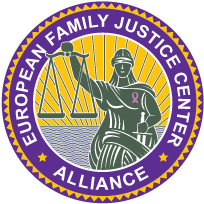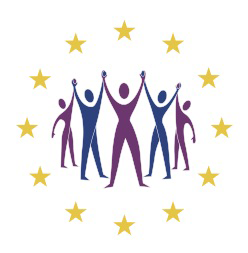COVID 19 impact on domestic violence and child abuse
COVID 19 impact on domestic violence and child abuse in general and the approach during the Corona crisis
Preface
Staying in your house and keeping social distance entails risks when your house is a hostile environment and you depend on support from outside. Stress, power, control, disturbed relationships and poor family dynamics are usually at the basis of domestic violence and/or child abuse. Most violence in our society occurs within the family and among acquaintances. According the WHO numbers worldwide indicate that 1 in 3 women experience physical or sexual violence during their lifetime. In children and adolescents 1 in 10 to 1 in 2 minors indicate that they are victims of violence, neglect or abuse. A (conservative) international estimation states that at least 3% of minors are victims of serious child abuse.
Disasters and crises have a greater and different impact on vulnerable people and families. Normal life stops, stress and uncertainty increases, families are extra dependent on each other, there is financial uncertainty and social and institutional support disappears
Increasing factors of stress
The increase in the factors of stress intensifies escalations, including in families where domestic violence and child abuse already is a risk, and increases the frequency and severity of violent incidents. The situation as a result of the Corona crisis triggers possibly slumbering violence, may increase the level of violence or the escalation of violence within a family.
Under the Covid-19 measures and with current knowledge about the dynamics and impact of factors of stress factors in domestic violence and child abuse, we can assume that victims will try to find support even less often than usual or possible not at all.
There are several reasons: not being able to leave the perpetrator, caring for the children, not expecting any help due to the Covid-19 measures, given the circumstances not daring to burden professionals, the idea (influenced by the Corona reports, fake or real) that only 'serious and acute' cases receive help or support.
Stress created by the Covid-19 measures can also intensify trauma. Loneliness and being alone with problems, without social contact during this difficult period, will lead to extra trauma complaints.
Coercive control in domestic violence
In situations of coercive control, as professionals we have to be extra alert. Coercive control is often accompanied by extreme power inequality, involving threats, breaking resistance and intimidation. In coercive control safeguarding the victims and taking accountability by perpetrators is crucial.
When victims are forced to stay at home and in the immediate environment of the perpetrator, this offers the perpetrators many opportunities to exercise control. The lock-down and social distancing measures that are imposed mean that perpetrators of violence have the opportunity of taking advantage of an already stressful situation and gain more control.
Victims are trapped in a situation where they are required to stay in their homes together with the perpetrator, isolated from people and resources that can help them.
Testimonials from victims in such situations demonstrate various ways in which measures are taken against them.
Escalating of violence due to the Covid-19 measures
Increasing factors of stress in families in difficult circumstances can also trigger or means escalation of violence. Families that are held together in confined space for extended periods of time without being able to get out of it can even cause a rise of tension in general. In families prone to domestic violence and child abuse and/or with insufficient coping mechanisms, this is a serious aggravating factor for violence.
The effects of the crisis and the resulting measures may have implications for the behavioral patterns of perpetrators and for the functioning of the family and the children present in the family. Due to the social distance, victims, children and adults, have fewer opportunities to contact supportive friends, family members, social workers.
Under the current measures of Covid-19, any pattern of domestic violence and child abuse should be seen as more serious.
An important aspect is that almost all safety tools that are available are based on involving the social environment and assistance. The risk factors for an escalation and possible fatal outcome of violence (by example the use of weapons, isolation, recidivism) are no different during the Covid-19 measures than before. However, they are greatly strengthened by the crisis and the possibilities for professionals to have an impact on them are seriously reduced or even absent.
Failure to create safety can have major consequences, also in the long term. Even in usual circumstances, it’s often not so simple to install safety. Victims can already have negative experiences because the actions that were taken did not lead to safety (by example seeking help and not having success, reporting and not being followed up, social environment that’s critical towards the victim). Under the Covid-19 measured, this experience can be enhanced if there are even more thresholds to find support by social welfare organisations or police and judicial options.
Consequences for those who are involved
In tackling domestic violence, many professionals experience that victims, especially those who live under coercive control and inequality of power between perpetrator and victim, go along with the perpetrator's story and are very accommodating towards the perpetrator. Examples include withdrawing the original story about the facts, returning to the partner, matching the story to that of the violent partner. This has various causes, such as fear, dependence, no defense against years of violence, shame and guilt, fear of losing the children, financial reasons.
Under conditions of Covid-19, victims of coercive control live even more than usual in a situation where they have few escape possibilities and are strongly controlled by the perpetrator.
Children are (even) more often witnesses of violence and/or the rise of tension as a result of the compulsory family home stay. We now know very well the (also long-term) effects of family violence on children. The ACE (Adversed Childhood Experience) study, among others, is very clear in this. Also studies on mental and psychological impact show the negative effects on children. In normal circumstances, children are witnesses and/or co-victims of the violence in up to 80% of the cases. Under the circumstances of staying all together in the house for weeks without the possibility of going to other places, it is more than likely that this percentage will increase. Combined with an escalation of violence in the family and of the severity and frequency of violence, this means a highly explosive cocktail.
Problems can also arise with regard to co-parenting and visiting arrangements. For example, a scheme can be jeopardized due to working hours, one parent may be afraid to give the children to the other parent because of the risk of infection. Reasons can be the presence of other children and adults in newly composed families, different ways in dealing with the measures. The risk of infection can also being used as an opportunity to control the ex-partner.
The specific situation of people who are ill and have to stay in quarantine at home, often in a room separate from other family members, should also be considered. Their freedom of movement and the ability to outreach to others for help, to control the situation or to regulate the emotion is often even more affected, and the stress and anxiety even higher.
Psychiatric problems, as for perpetrators and victims, and the resulting emotions and moods (anxiety, depression, suicidality, paranoid thoughts) can be aggravated by the stress under Covid-19 and the limitation of freedoms and possibilities for support.
A side note is that domestic violence often also affects the physical resistance of victims. Constant stress and exposure to threats and violence has consequences for physical capacity and immunity. In times of risk of infection with a dangerous virus like Covid-19, this should also be considered.
Points of attention for professionals
The current Covid-19 measures and the impact on violence in families, of whatever form and dynamics, combined with the impact on the available resources to install safety, require much more concrete and visible action in the event of (imminent) insecurity.
In many situations the range of options for action and options for working on immediate safety will decrease seriously.
The lack of options to install time-out, involve the social network, arrange intensive case management at home, and other possible actions, has an important consequence: the choice of staying or leaving is much harder to make. Staying means a situation whereby family members are forced to live together under one roof without much possibilities to create space, distance and involve third parties to de-escalate tension. Leaving means separation of the family members without a direct timing for the length of separation and the possibility to meet face-to-face, including the children and other cohabitant family members. This is an important decision for victims, their family members and professionals. Victims can therefore be very hesitant about taking the necessary physical Time-Out, to leave home, to turn to a crisis center or shelter.
The European Family Justice Center Alliance has posted practical guidelines for the various professional groups on the website. Topics such as 'how do you as a professional deal with the changing circumstances?' 'How can I achieve safety as optimal as possible?' 'What are my options?' 'How do I realize online assistance and accessibility as quickly as possible?' and other practical guidelines are available.


